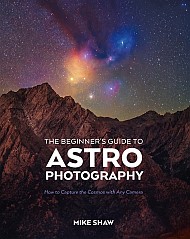Astronomy
NASA’s New Astronaut Candidates
Australian Amateur Discovers Back-to-back Novae!
John Seach hit the jackpot, discovering novae in both Centaurus and Sagittarius within a day of each other.
The post Australian Amateur Discovers Back-to-back Novae! appeared first on Sky & Telescope.
Mapping the structure of the brain doesn't fully explain its function
Mapping the structure of the brain doesn't fully explain its function
The Moon Is Rusting—Thanks to ‘Wind’ Blown from Earth
Lunar minerals can rust when bombarded with high-energy oxygen particles, experiments show
Dinosaur found with a crocodile in its jaws named as new species
Dinosaur found with a crocodile in its jaws named as new species
The truth about narcissists: How to handle them, and can they change?
The truth about narcissists: How to handle them, and can they change?
Hints of exotic dark matter particles could be hiding in LHC data
Hints of exotic dark matter particles could be hiding in LHC data
Microbial Life Colonizes Post-Impact Craters And Thrives For Millions Of Years
Researchers have dated the appearance of microbial life in a 78 million year old impact crater. Life colonized the fractured hydrothermal system the impact created, and thrived for millions of years. It could do the same on other worlds.
Webb Spots a Massive Stellar Jet in the Outer Milky Way
NASA's James Webb Space Telescope recently imaged an extremely large and symmetric protostellar jet at the outskirts of our Milky Way galaxy. From tip to tip, this protostellar jet is 8 light-years across, about double the distance from our Sun to its closest neighboring star system, Alpha Centauri.
Will We Ever Make it to Mars?
You know, if you take away the lack of air and water, the weaker Sun, the lower gravity, and the toxic soil, Mars isn’t all that bad of a place to live.
Saturn 'On Razor's Edge' at Opposition for 2025
It seems like most of the planets have fled the evening scene. But that’s about to change this week. Saturn reaches opposition on Sunday, September 21st, passing closest to the Earth at just over 8.5 Astronomical Units (AU) or 1.3 billion kilometers distant, and rising opposite to the setting Sun. This marks the best time to view the ringed world, as it dominates the night sky from sunset until sunrise.
Lucy's Main Belt Target Has Its Features Named
When considering the unnamed major features of all the moons, asteroids, and comets in our solar system there are still a lot of places out there that need proper names. That means the International Astronomical Union (IAU), the non-governmental body responsible for naming astronomical objects, has its work cut out for them. Recently they tackled a relatively easy challenge by approving a series of names on the asteroid Donaldjohnson, the first and only target of NASA’s Lucy mission in the main asteroid belt. With those names come a whole new way to talk about one of the asteroids that humanity has studied most closely thus far.
Astronomers Spot Rare Einstein Cross — and a Massive Clump of Dark Matter
The discovery of a rare Einstein Cross — five images of the same galaxy — reveals a trillion-solar-mass dark matter clump.
The post Astronomers Spot Rare Einstein Cross — and a Massive Clump of Dark Matter appeared first on Sky & Telescope.
The Global Burden of RSV
Respiratory syncytial virus (RSV) continues to affect infants and older and immunocompromised people around the world. These graphics reveal where the burden lies and what the effects of immunizations are
The Fight to End Childhood RSV in Indian Country
American Indian and Alaska Native infants experience the highest rates of RSV-related hospitalization in the U.S., but a breakthrough immunization is helping to close the gap


